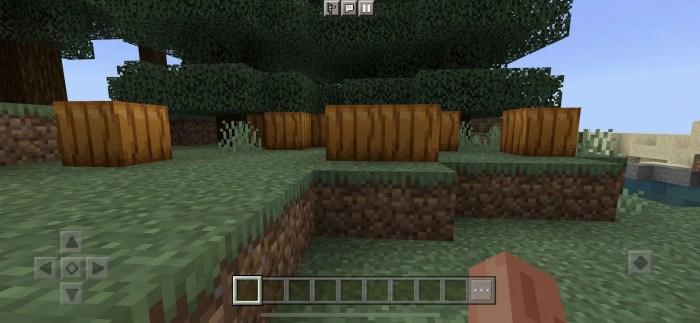How to locate caves is a captivating guide that embarks on an extraordinary journey into the enigmatic realm of subterranean wonders. This comprehensive exploration delves into the intricacies of cave formation, unveils the secrets of surface indicators, and empowers readers with the techniques to uncover hidden cave systems.
From the majestic solutional caves carved by water’s relentless flow to the awe-inspiring volcanic caves forged by fiery eruptions, this guide unveils the diverse tapestry of cave types. It equips readers with the knowledge to decipher surface clues, such as sinkholes and karst topography, that hint at the presence of subterranean labyrinths.
Identifying Cave Types

Caves are intriguing geological formations that can be classified into three primary types: solutional, volcanic, and glacial caves.
Solutional caves are the most common type, formed by the dissolution of soluble rocks such as limestone, dolomite, and gypsum by water. As water seeps through cracks and fissures, it slowly dissolves the rock, creating chambers, passages, and other cave features.
Volcanic caves are formed within or beneath volcanoes. Lava tubes are common examples, created when molten lava flows through a channel and then drains away, leaving behind a hollow tube.
Glacial caves are formed by the erosive action of glaciers. As glaciers move over the landscape, they can carve out caves in ice or melt and refreeze, creating caves in the underlying rock.
Famous Caves of Each Type
- Solutional: Mammoth Cave (Kentucky, USA), Carlsbad Caverns (New Mexico, USA), Waitomo Caves (New Zealand)
- Volcanic: Cueva de los Verdes (Canary Islands, Spain), Lava Beds National Monument (California, USA), Undara Lava Tubes (Queensland, Australia)
- Glacial: Ice Cave (Austria), Mendenhall Glacier Caves (Alaska, USA), Vatnajökull Ice Caves (Iceland)
Surface Indicators of Caves: How To Locate Caves

Certain surface features can indicate the presence of caves below. These include:
- Sinkholes: Depressions in the ground caused by the collapse of an underlying cave
- Springs: Where groundwater emerges from a cave
- Karst topography: A landscape characterized by sinkholes, springs, and other features associated with soluble rocks
Topographic maps and aerial imagery can help identify potential cave locations by showing these surface features.
Tips for Field Reconnaissance
- Look for sinkholes, springs, or other karst features.
- Inspect the landscape for signs of groundwater movement, such as seeps or wet areas.
- Check for unusual vegetation patterns, as some plants thrive in areas with high moisture levels associated with caves.
Geophysical Techniques for Cave Detection

Geophysical techniques can be used to locate caves and determine their depth and extent.
Ground-Penetrating Radar (GPR)
GPR sends electromagnetic waves into the ground and detects reflections from underground structures. It can be used to identify caves, voids, and other subsurface features.
Seismic Refraction and Electrical Resistivity Surveys
These techniques use seismic waves or electrical currents to measure the properties of the subsurface. They can help identify underground voids and determine their size and shape.
Examples of Cave Detection Using Geophysical Methods
- GPR was used to locate a cave beneath the Great Pyramid of Giza.
- Seismic refraction surveys helped identify a large cave system in the Black Hills of South Dakota.
Remote Sensing for Cave Exploration
Satellite imagery and LiDAR (Light Detection and Ranging) can be used to identify cave entrances and map cave systems.
Satellite imagery can show surface features associated with caves, such as sinkholes and springs. LiDAR can create detailed elevation maps that can be used to visualize cave topography.
Case Studies of Cave Discoveries Using Remote Sensing Technologies
- LiDAR data was used to identify a new cave entrance in the Grand Canyon.
- Satellite imagery helped locate a cave system in the Amazon rainforest.
Field Methods for Cave Location

A systematic cave survey involves mapping the cave and documenting its features.
Equipment and Techniques, How to locate caves
- Flashlights: To illuminate the cave
- Ropes: For climbing and descending
- Surveying tools: For measuring and mapping the cave
Safety Tips
- Always explore caves with a partner.
- Be aware of the risks of cave exploration, such as rockfalls and hypothermia.
- Stay within your limits and turn back if conditions become unsafe.
Answers to Common Questions
What are the different types of caves?
Caves are broadly classified into three main types: solutional caves, volcanic caves, and glacial caves.
How can I identify potential cave locations on the surface?
Surface indicators of caves include sinkholes, springs, and karst topography. Topographic maps and aerial imagery can also be used to identify potential cave locations.
What geophysical techniques are used to locate caves?
Geophysical techniques used to locate caves include ground-penetrating radar (GPR), seismic refraction, and electrical resistivity surveys.
